Srinivasan Parthasarathy
DiffER: Categorical Diffusion for Chemical Retrosynthesis
May 29, 2025Abstract:Methods for automatic chemical retrosynthesis have found recent success through the application of models traditionally built for natural language processing, primarily through transformer neural networks. These models have demonstrated significant ability to translate between the SMILES encodings of chemical products and reactants, but are constrained as a result of their autoregressive nature. We propose DiffER, an alternative template-free method for retrosynthesis prediction in the form of categorical diffusion, which allows the entire output SMILES sequence to be predicted in unison. We construct an ensemble of diffusion models which achieves state-of-the-art performance for top-1 accuracy and competitive performance for top-3, top-5, and top-10 accuracy among template-free methods. We prove that DiffER is a strong baseline for a new class of template-free model, capable of learning a variety of synthetic techniques used in laboratory settings and outperforming a variety of other template-free methods on top-k accuracy metrics. By constructing an ensemble of categorical diffusion models with a novel length prediction component with variance, our method is able to approximately sample from the posterior distribution of reactants, producing results with strong metrics of confidence and likelihood. Furthermore, our analyses demonstrate that accurate prediction of the SMILES sequence length is key to further boosting the performance of categorical diffusion models.
A Generic Framework for Conformal Fairness
May 22, 2025Abstract:Conformal Prediction (CP) is a popular method for uncertainty quantification with machine learning models. While conformal prediction provides probabilistic guarantees regarding the coverage of the true label, these guarantees are agnostic to the presence of sensitive attributes within the dataset. In this work, we formalize \textit{Conformal Fairness}, a notion of fairness using conformal predictors, and provide a theoretically well-founded algorithm and associated framework to control for the gaps in coverage between different sensitive groups. Our framework leverages the exchangeability assumption (implicit to CP) rather than the typical IID assumption, allowing us to apply the notion of Conformal Fairness to data types and tasks that are not IID, such as graph data. Experiments were conducted on graph and tabular datasets to demonstrate that the algorithm can control fairness-related gaps in addition to coverage aligned with theoretical expectations.
Ranking Free RAG: Replacing Re-ranking with Selection in RAG for Sensitive Domains
May 21, 2025Abstract:Traditional Retrieval-Augmented Generation (RAG) pipelines rely on similarity-based retrieval and re-ranking, which depend on heuristics such as top-k, and lack explainability, interpretability, and robustness against adversarial content. To address this gap, we propose a novel method METEORA that replaces re-ranking in RAG with a rationale-driven selection approach. METEORA operates in two stages. First, a general-purpose LLM is preference-tuned to generate rationales conditioned on the input query using direct preference optimization. These rationales guide the evidence chunk selection engine, which selects relevant chunks in three stages: pairing individual rationales with corresponding retrieved chunks for local relevance, global selection with elbow detection for adaptive cutoff, and context expansion via neighboring chunks. This process eliminates the need for top-k heuristics. The rationales are also used for consistency check using a Verifier LLM to detect and filter poisoned or misleading content for safe generation. The framework provides explainable and interpretable evidence flow by using rationales consistently across both selection and verification. Our evaluation across six datasets spanning legal, financial, and academic research domains shows that METEORA improves generation accuracy by 33.34% while using approximately 50% fewer chunks than state-of-the-art re-ranking methods. In adversarial settings, METEORA significantly improves the F1 score from 0.10 to 0.44 over the state-of-the-art perplexity-based defense baseline, demonstrating strong resilience to poisoning attacks. Code available at: https://anonymous.4open.science/r/METEORA-DC46/README.md
From Guessing to Asking: An Approach to Resolving the Persona Knowledge Gap in LLMs during Multi-Turn Conversations
Mar 16, 2025Abstract:In multi-turn dialogues, large language models (LLM) face a critical challenge of ensuring coherence while adapting to user-specific information. This study introduces the persona knowledge gap, the discrepancy between a model's internal understanding and the knowledge required for coherent, personalized conversations. While prior research has recognized these gaps, computational methods for their identification and resolution remain underexplored. We propose Conversation Preference Elicitation and Recommendation (CPER), a novel framework that dynamically detects and resolves persona knowledge gaps using intrinsic uncertainty quantification and feedback-driven refinement. CPER consists of three key modules: a Contextual Understanding Module for preference extraction, a Dynamic Feedback Module for measuring uncertainty and refining persona alignment, and a Persona-Driven Response Generation module for adapting responses based on accumulated user context. We evaluate CPER on two real-world datasets: CCPE-M for preferential movie recommendations and ESConv for mental health support. Using A/B testing, human evaluators preferred CPER's responses 42% more often than baseline models in CCPE-M and 27% more often in ESConv. A qualitative human evaluation confirms that CPER's responses are preferred for maintaining contextual relevance and coherence, particularly in longer (12+ turn) conversations.
Graph Sparsification for Enhanced Conformal Prediction in Graph Neural Networks
Oct 28, 2024Abstract:Conformal Prediction is a robust framework that ensures reliable coverage across machine learning tasks. Although recent studies have applied conformal prediction to graph neural networks, they have largely emphasized post-hoc prediction set generation. Improving conformal prediction during the training stage remains unaddressed. In this work, we tackle this challenge from a denoising perspective by introducing SparGCP, which incorporates graph sparsification and a conformal prediction-specific objective into GNN training. SparGCP employs a parameterized graph sparsification module to filter out task-irrelevant edges, thereby improving conformal prediction efficiency. Extensive experiments on real-world graph datasets demonstrate that SparGCP outperforms existing methods, reducing prediction set sizes by an average of 32\% and scaling seamlessly to large networks on commodity GPUs.
Benchmarking Graph Conformal Prediction: Empirical Analysis, Scalability, and Theoretical Insights
Sep 26, 2024Abstract:Conformal prediction has become increasingly popular for quantifying the uncertainty associated with machine learning models. Recent work in graph uncertainty quantification has built upon this approach for conformal graph prediction. The nascent nature of these explorations has led to conflicting choices for implementations, baselines, and method evaluation. In this work, we analyze the design choices made in the literature and discuss the tradeoffs associated with existing methods. Building on the existing implementations for existing methods, we introduce techniques to scale existing methods to large-scale graph datasets without sacrificing performance. Our theoretical and empirical results justify our recommendations for future scholarship in graph conformal prediction.
REASONS: A benchmark for REtrieval and Automated citationS Of scieNtific Sentences using Public and Proprietary LLMs
May 03, 2024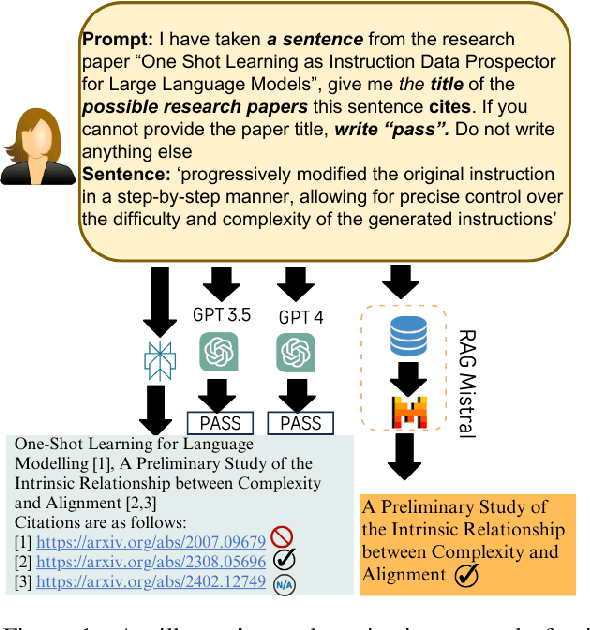
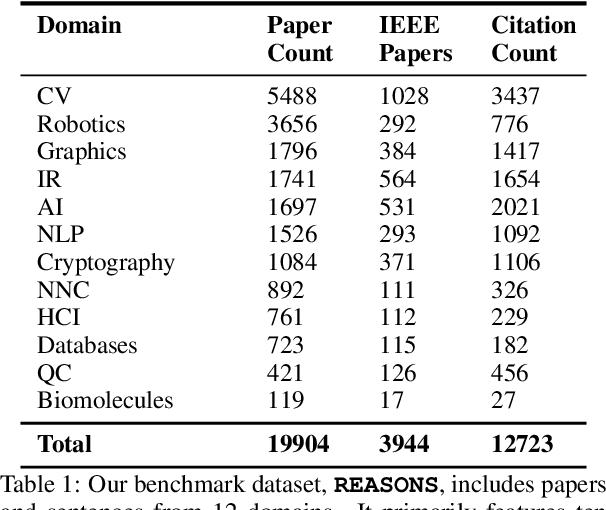

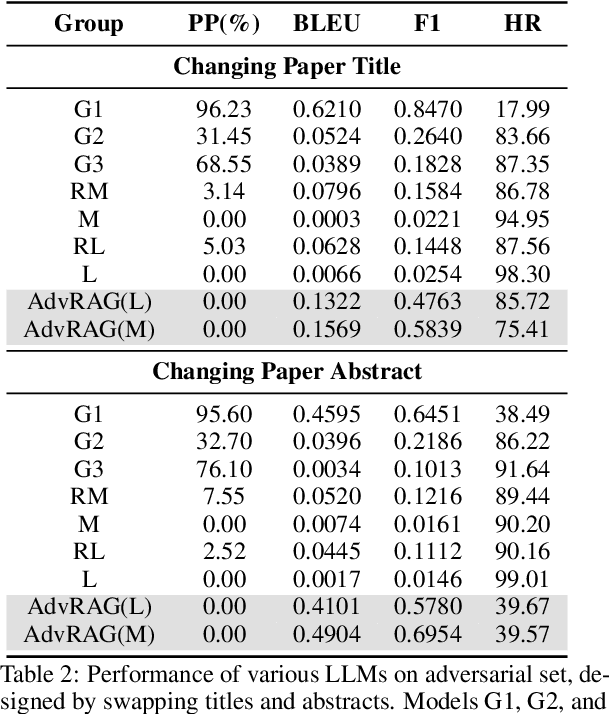
Abstract:Automatic citation generation for sentences in a document or report is paramount for intelligence analysts, cybersecurity, news agencies, and education personnel. In this research, we investigate whether large language models (LLMs) are capable of generating references based on two forms of sentence queries: (a) Direct Queries, LLMs are asked to provide author names of the given research article, and (b) Indirect Queries, LLMs are asked to provide the title of a mentioned article when given a sentence from a different article. To demonstrate where LLM stands in this task, we introduce a large dataset called REASONS comprising abstracts of the 12 most popular domains of scientific research on arXiv. From around 20K research articles, we make the following deductions on public and proprietary LLMs: (a) State-of-the-art, often called anthropomorphic GPT-4 and GPT-3.5, suffers from high pass percentage (PP) to minimize the hallucination rate (HR). When tested with Perplexity.ai (7B), they unexpectedly made more errors; (b) Augmenting relevant metadata lowered the PP and gave the lowest HR; (c) Advance retrieval-augmented generation (RAG) using Mistral demonstrates consistent and robust citation support on indirect queries and matched performance to GPT-3.5 and GPT-4. The HR across all domains and models decreased by an average of 41.93% and the PP was reduced to 0% in most cases. In terms of generation quality, the average F1 Score and BLEU were 68.09% and 57.51%, respectively; (d) Testing with adversarial samples showed that LLMs, including the Advance RAG Mistral, struggle to understand context, but the extent of this issue was small in Mistral and GPT-4-Preview. Our study con tributes valuable insights into the reliability of RAG for automated citation generation tasks.
HeteroMILE: a Multi-Level Graph Representation Learning Framework for Heterogeneous Graphs
Mar 31, 2024Abstract:Heterogeneous graphs are ubiquitous in real-world applications because they can represent various relationships between different types of entities. Therefore, learning embeddings in such graphs is a critical problem in graph machine learning. However, existing solutions for this problem fail to scale to large heterogeneous graphs due to their high computational complexity. To address this issue, we propose a Multi-Level Embedding framework of nodes on a heterogeneous graph (HeteroMILE) - a generic methodology that allows contemporary graph embedding methods to scale to large graphs. HeteroMILE repeatedly coarsens the large sized graph into a smaller size while preserving the backbone structure of the graph before embedding it, effectively reducing the computational cost by avoiding time-consuming processing operations. It then refines the coarsened embedding to the original graph using a heterogeneous graph convolution neural network. We evaluate our approach using several popular heterogeneous graph datasets. The experimental results show that HeteroMILE can substantially reduce computational time (approximately 20x speedup) and generate an embedding of better quality for link prediction and node classification.
Grounding from an AI and Cognitive Science Lens
Feb 19, 2024Abstract:Grounding is a challenging problem, requiring a formal definition and different levels of abstraction. This article explores grounding from both cognitive science and machine learning perspectives. It identifies the subtleties of grounding, its significance for collaborative agents, and similarities and differences in grounding approaches in both communities. The article examines the potential of neuro-symbolic approaches tailored for grounding tasks, showcasing how they can more comprehensively address grounding. Finally, we discuss areas for further exploration and development in grounding.
Masked LoGoNet: Fast and Accurate 3D Image Analysis for Medical Domain
Feb 09, 2024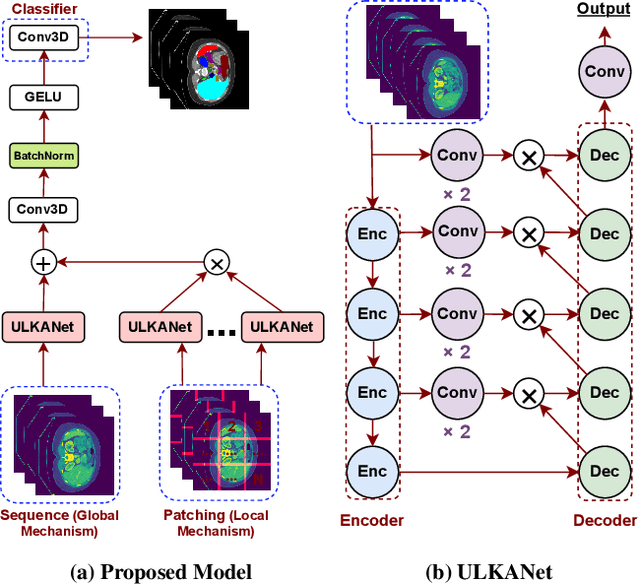

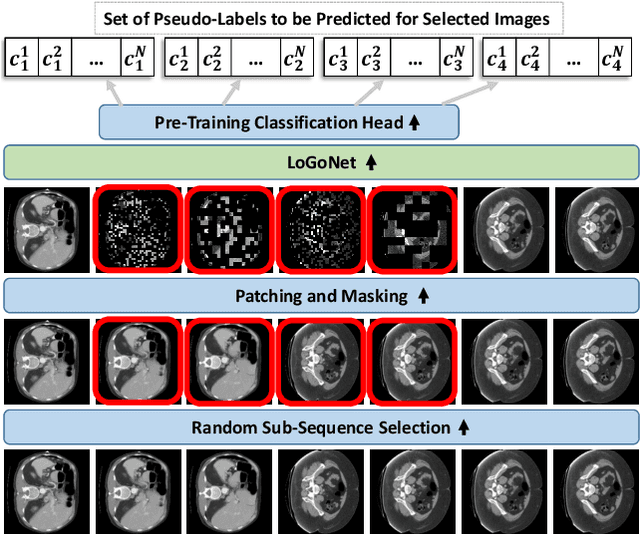

Abstract:Standard modern machine-learning-based imaging methods have faced challenges in medical applications due to the high cost of dataset construction and, thereby, the limited labeled training data available. Additionally, upon deployment, these methods are usually used to process a large volume of data on a daily basis, imposing a high maintenance cost on medical facilities. In this paper, we introduce a new neural network architecture, termed LoGoNet, with a tailored self-supervised learning (SSL) method to mitigate such challenges. LoGoNet integrates a novel feature extractor within a U-shaped architecture, leveraging Large Kernel Attention (LKA) and a dual encoding strategy to capture both long-range and short-range feature dependencies adeptly. This is in contrast to existing methods that rely on increasing network capacity to enhance feature extraction. This combination of novel techniques in our model is especially beneficial in medical image segmentation, given the difficulty of learning intricate and often irregular body organ shapes, such as the spleen. Complementary, we propose a novel SSL method tailored for 3D images to compensate for the lack of large labeled datasets. The method combines masking and contrastive learning techniques within a multi-task learning framework and is compatible with both Vision Transformer (ViT) and CNN-based models. We demonstrate the efficacy of our methods in numerous tasks across two standard datasets (i.e., BTCV and MSD). Benchmark comparisons with eight state-of-the-art models highlight LoGoNet's superior performance in both inference time and accuracy.
 Add to Chrome
Add to Chrome Add to Firefox
Add to Firefox Add to Edge
Add to Edge